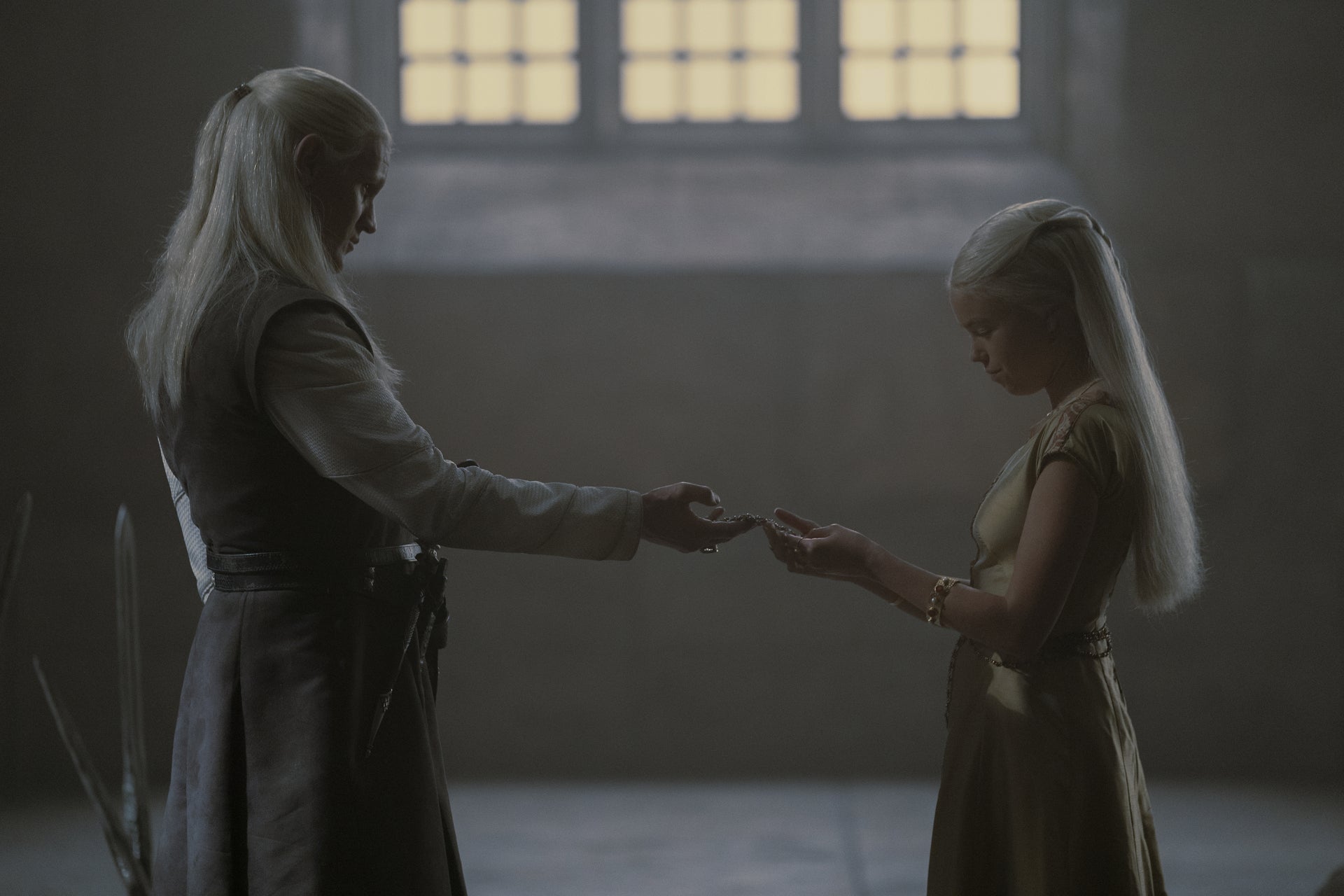
It’s taken exactly one episode – one scene, really – for House of the Dragon to prove it’s as adept as Game of Thrones was at dominating the monoculture. Showrunner Miguel Sapochnik has already commented on the brutally graphic forced birth sequence that incited social media backlash, which included some viewers demanding the premiere episode of HBO’s new spinoff be preceded by a trigger warning. “We did make a point of showing it to as many women as possible and asked the very question, ‘Was this too violent for you?’” Sapochnik said at a roundtable event. “And unanimously, the response was ‘no’.”
In the deeply horrific scene, King Viserys’ wife Queen Aemma, played by Sian Brooke, is in exhausting, protracted childbirth. Her baby – of unknown sex – is in breach, and her medieval-inspired “doctors” are unable to correct it. The Grand Maester tells the king that both his wife and the unborn child may not live, but he has a way to save one and not the other: a forced caesarean delivery performed on a fully conscious and unconsenting woman.
The heir-hungry king, convinced the baby is a boy, gives the team the go-ahead and what follows is a scene so monstrous I eventually left the room. Aemma is pinned down. Her dizzy smile turns to terror as she realises what’s being done to her. The camera shows the incision, before clumsily intercutting scenes from a jousting tournament happening just beyond the castle walls. She dies. So does the baby, who happens to be a boy – magnifying Viserys’ chagrin. It was a waste of life. It was a waste of the excellent Sian Brooke, the only member of House Targaryen to genuinely look good under all the white blonde hair.
Like a lot of viewers, I hated the scene – not just for being needlessly graphic, but for being so purely ancillary to the plot. In a series that had something original to say about the mistreatment of women, a moment so barbarous would be the culmination of a long and meaty storyline. Here, it’s a means to an end: a savage shortcut to establishing a dynastic battle between the king’s brother – an impossibly flaxen Matt Smith – and his daughter, an equally towheaded Emma D’Arcy. Even the supposedly heartbroken king, ravaged by guilt, is playing the game of thrones the day after the funeral.
I suppose the scene’s secondary purpose is to establish the king’s villainy, but if that’s the justification, much more could have been done to condemn his choice. The only character to voice any objection is his now motherless daughter, who’s content to accept the mantle of heir to the throne in exchange for the loss. And what to make of the scene being juxtaposed with the elective and excessive violence of a jousting tournament? The series does no more to highlight the mistreatment of women than it does the hard lives of the age’s professional athletes.
At the same roundtable, attended by Insider, Sapochnik described his process for thinking about the scene at length: “We shouldn’t be shying away from this thing that’s happened because it’s raising a point that seems to hit a real trigger for women, which is this idea of choice,” he said – a comment that assumes women’s “triggers” are fair inspiration for a fantasy TV series. “[Aemma] doesn’t get to choose. She’s effectively murdered by her husband. And that is a good indication of the state of play in this world that we’re inhabiting.”

It’s hard to imagine setting a lower bar for gendered violence than “world-building”. Because whatever else is true, these depictions are hurtful to watch, desensitising and potentially normalising. This isn’t to say we should never recreate gruesome violence, just that each time we do, it should be sufficiently meaningful – it should communicate something to the audience that only violence could.
But House of the Dragon wasn’t making a fundamental point about violence against women in its premiere, or even a prescient one given the state of abortion rights in America. It was using a woman’s trauma as an undercooked plot device to move the story forward. To pretend it was anything more is the real fantasy.






